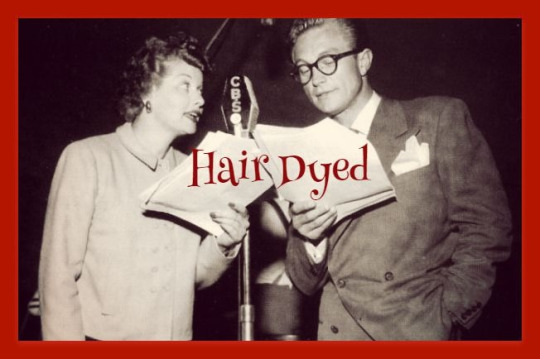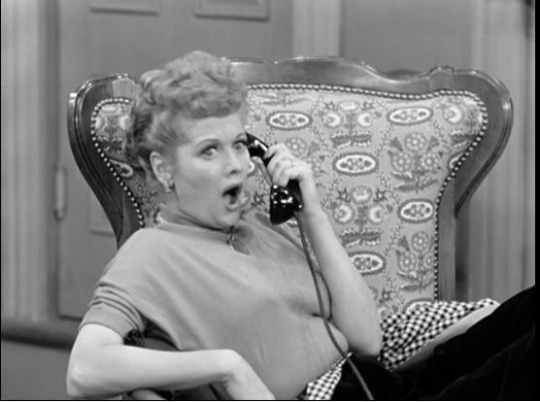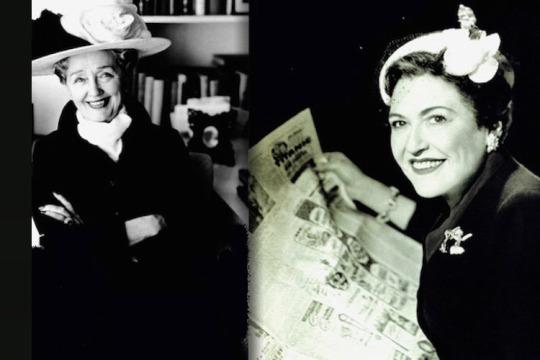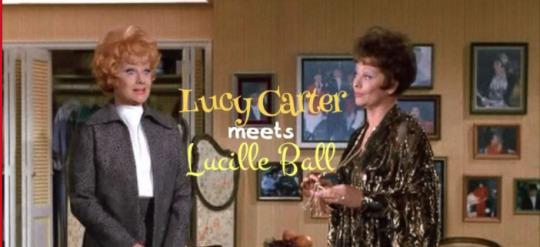#author: liz crocker
Explore tagged Tumblr posts
Text
"Femmes, through a reshaped femininity, exhibit an assertive sexuality that does not conflate desire with political practice. This very assertiveness can be politically empowering for femmes who like to play with the idea of power but are not disempowered by this play. For example, femmes with a bottom identification can renegotiate the dynamics of passivity/activity such that their feminine position is one of receiving pleasure rather than of being receptive solely for someone else's pleasure. What seems to be passivity is actually activity: she allows the butch to control her pleasure, but this control and the pleasure are exactly what the femme has demanded. For the bottom femme as for other varieties of femme sexuality--top, s/m, bisexual, or others--her own female sexual agency is paramount. The femme who plays with power provides a model that negotiates rather than ignores power differentials in relationships. [...] In many ways, femmes' chosen pleasures rather than politically prescribed pleasures are radically feminist."
-- "An Introduction to Sustaining Femme Gender," written by Laura Harris & Liz Crocker. (Emphasis in bold mine.)
#lesbian#lesbian literature#dyke#dyke literature#archived#thatbutcharchivist#femme: feminists lesbians and bad girls#author: laura harris#author: liz crocker#year: 1997#publisher: routledge#femme#femme lesbian#femme dyke#stone femme#high femme#stone4stone#stone bottom#femme4butch#essays#quotations
663 notes
·
View notes
Text
HAIR DYED
June 10, 1949

“Hair Dyed” aka “Liz Gets Her Hair Dyed” is episode #48 of the radio series MY FAVORITE HUSBAND broadcast on June 10, 1949 on the CBS Radio Network.
Synopsis ~ After George warning Liz about the dangers of idle gossip, Liz's chatty and absent-minded hair stylist forgets what she's doing and mistakenly dyes Liz's hair black. Nobody recognizes Liz, so she decides to flirt with George to test his fidelity. Gossip about Liz and George spreads all over town.

Note: The first part of the script was later the basis for the “I Love Lucy” episode “The Gossip” (S1;E24) in March 1952. The second half inspired “The Black Wig” (S3;E26) from April 1954. This has caused some confusion between “Hair Dyed” and a later episode of “My Favorite Husband” titled “Gossip” that more fully follows the storyline of “The Gossip” but does not included Liz / Lucy having black hair.
REGULAR CAST

Lucille Ball (Liz Cooper) was born on August 6, 1911 in Jamestown, New York. She began her screen career in 1933 and was known in Hollywood as ‘Queen of the B’s’ due to her many appearances in ‘B’ movies. With Richard Denning, she starred in a radio program titled “My Favorite Husband” which eventually led to the creation of “I Love Lucy,” a television situation comedy in which she co-starred with her real-life husband, Latin bandleader Desi Arnaz. The program was phenomenally successful, allowing the couple to purchase what was once RKO Studios, re-naming it Desilu. When the show ended in 1960 (in an hour-long format known as “The Lucy-Desi Comedy Hour”) so did Lucy and Desi’s marriage. In 1962, hoping to keep Desilu financially solvent, Lucy returned to the sitcom format with “The Lucy Show,” which lasted six seasons. She followed that with a similar sitcom “Here’s Lucy” co-starring with her real-life children, Lucie and Desi Jr., as well as Gale Gordon, who had joined the cast of “The Lucy Show” during season two. Before her death in 1989, Lucy made one more attempt at a sitcom with “Life With Lucy,” also with Gordon.
Richard Denning (George Cooper) was born as Louis Albert Heindrich Denninger Jr., in Poughkeepsie, New York. When he was 18 months old, his family moved to Los Angeles. Plans called for him to take over his father’s garment manufacturing business, but he developed an interest in acting. Denning enlisted in the US Navy during World War II. He is best known for his roles in various science fiction and horror films of the 1950s. Although he teamed with Lucille Ball on radio in “My Favorite Husband,” the two never acted together on screen. While “I Love Lucy” was on the air, he was seen on another CBS TV series, “Mr. & Mrs. North.” From 1968 to 1980 he played the Governor on “Hawaii 5-0″, his final role. He died in 1998 at age 84.
Gale Gordon (Rudolph Atterbury) had worked with Lucille Ball on “The Wonder Show” on radio in 1938. One of the front-runners to play Fred Mertz on “I Love Lucy,” he eventually played Alvin Littlefield, owner of the Tropicana, during two episodes in 1952. After playing a Judge in an episode of “The Lucy-Desi Comedy Hour” in 1958, he would re-team with Lucy for all of her subsequent series’: as Theodore J. Mooney in ”The Lucy Show”; as Harrison Otis Carter in “Here’s Lucy”; and as Curtis McGibbon on “Life with Lucy.” Gordon died in 1995 at the age of 89.
Bea Benadaret (Iris Atterbury) was considered the front-runner to be cast as Ethel Mertz but when “I Love Lucy” was ready to start production she was already playing a similar role on TV’s “The George Burns and Gracie Allen Show” so Vivian Vance was cast instead. On “I Love Lucy” she was cast as Lucy Ricarodo’s spinster neighbor, Miss Lewis, in “Lucy Plays Cupid” (ILL S1;E15) in early 1952. Later, she was a success in her own show, “Petticoat Junction” as Shady Rest Hotel proprietress Kate Bradley. She starred in the series until her death in 1968.
Ruth Perrott (Katie, the Maid) was also later seen on “I Love Lucy.” She first played Mrs. Pomerantz, a member of the surprise investigating committee for the Society Matrons League in “Pioneer Women” (ILL S1;E25), as one of the member of the Wednesday Afternoon Fine Arts League in “Lucy and Ethel Buy the Same Dress” (ILL S3;E3), and a nurse when “Lucy Goes to the Hospital” (ILL S2;E16). She died in 1996 at the age of 96.
Bob LeMond (Announcer) also served as the announcer for the pilot episode of “I Love Lucy”. When the long-lost pilot was finally discovered in 1990, a few moments of the opening narration were damaged and lost, so LeMond – fifty years later – recreated the narration for the CBS special and subsequent DVD release.
GUEST CAST

GeGe Pearson (Bessie, Liz’s Beautician / Millie) was a veteran radio actress who made her debut on "The Red Skelton Show" in 1945. She guest starred with her real-life husband Hal Gerard as tourists in “Lucy Visits Grauman's” (ILL S5;E1). She is perhaps best remembered as the voice of Crusader Rabbit.
Coincidentally, Liz compares Bessie to columnist Drew Pearson (no relation).

Verna Felton (Grace) made her professional stage debut at the age of 10 as ‘Little Verna Felton,’ working extensively on stage. Felton was one of the most successful performers in radio, and soon went on to television. She played the persistent Mrs. Day (mother of Dennis) on “The Jack Benny Show” (1955-62). She received two Emmy nominations for her role in the Desilu series “December Bride,” playing Hilda Crocker from 1955 to 1959 opposite Spring Byington as Lily. On “I Love Lucy” Felton portrayed Mrs. Porter, the no-nonsense housekeeper in “Lucy Hires a Maid” (ILL S2;E23). She was also featured in “Sales Resistance” (ILL S2;E17), playing Mrs. Simpson, a housewife to whom Lucy tries to sell a Handy Dandy vacuum cleaner - only to find out that she has no electricity! Felton worked extensively for Disney voicing various animated characters in classic films.

“My Favorite Husband” was based on the novels Mr. and Mrs. Cugat, the Record of a Happy Marriage (1940) and Outside Eden (1945) by Isabel Scott Rorick, which had previously been adapted into the film Are Husbands Necessary? (1942). “My Favorite Husband” was first broadcast as a one-time special on July 5, 1948. Lucille Ball and Lee Bowman played the characters of Liz and George Cugat, and a positive response to this broadcast convinced CBS to launch “My Favorite Husband” as a series. Bowman was not available Richard Denning was cast as George. On January 7, 1949, confusion with bandleader Xavier Cugat prompted a name change to Cooper. On this same episode Jell-O became its sponsor. A total of 124 episodes of the program aired from July 23, 1948 through March 31, 1951. After about ten episodes had been written, writers Fox and Davenport departed and three new writers took over – Bob Carroll, Jr., Madelyn Pugh, and head writer/producer Jess Oppenheimer. In March 1949 Gale Gordon took over the existing role of George’s boss, Rudolph Atterbury, and Bea Benaderet was added as his wife, Iris. CBS brought “My Favorite Husband” to television in 1953, starring Joan Caulfield and Barry Nelson as Liz and George Coope. The television version ran two-and-a-half seasons, from September 1953 through December 1955, running concurrently with “I Love Lucy.” It was produced live at CBS Television City for most of its run, until switching to film for a truncated third season filmed (ironically) at Desilu and recasting Liz Cooper with Vanessa Brown.
EPISODE ANNOUNCER: "As we look in on the Coopers tonight...”
The episode opens in the Cooper’s living room where Liz and Iris are gossiping about someone named Grace while George and Rudolph smoke cigars.
IRIS: “She didn’t!” LIZ: “She did!” RUDOLPH: “What do you think, George. Did she or didn’t she?”

On “I Love Lucy” Lucy is on the telephone gossiping to Marge about Betty while Ricky reads the paper.
LUCY (to Marge): “She didn’t? She did? She didn’t? She couldn’t!” RICKY: “Maybe that’s why she didn’t.”
To give the girls an idea of how trivial they sound, the boys indulge in some mock gossiping from a feminine point of view. The retort is the same on both radio and television:
LIZ / LUCY: “Thank you, Hedda and Lolly.”

“Hedda and Lolly” are gossip columnists Hedda Hopper (left) and her rival Louella Parsons. Hopper famously played herself in an episode in season five of “I Love Lucy” as well as on the first episode of “The Lucy-Desi Comedy Hour.”
George / Ricky admonish their wives about the pettiness of gossip. Liz promises to cut back but will have to cancel her hair appointment, claiming that the beauty salon is where women go to gossip. George is doubtful.
LIZ: “Well, you don’t know Bessie, my beauty operator. She’s the Drew Pearson of the mud packs.”

Andrew Russell Pearson (1897-1969) was one of the best-known American political columnists of his day, noted for his syndicated newspaper column "Washington Merry-Go-Round," in which he criticized various public persons. He also had a program on NBC Radio titled “Drew Pearson Comments.”
Next day at the salon, Liz stops Bessie mid-gossip about Mrs. Andrews’ marital problems. Taken aback, Bessie refers to Liz as “old funnel ears”. Liz covers her ears and pretends she can’t hear all the juicy gossip. Getting carried away with her mindless chatter, Bessie accidentally dyes Liz’s hair black! She claims she can’t dye it back for two weeks without the risk Liz’s hair falling out!
LIZ: “Great! I’ve got a choice between Black Beauty or Old Baldy.”

Black Beauty is the eponymous horse featured in the 1877 novel by English author Anna Sewell. Coincidentally, Richard Denning (above with Mona Freeman) starred in a 1946 film adaptation of the book. Old Baldy probably refers to Mount San Antonio, in the San Gabriel mountains outside Los Angeles.
Iris comes into the salon and doesn’t recognize Liz. Things take a turn for the meta when Bessie compares her to actress Lucille Ball!
LIZ: “Oh! She’s pretty! Do I look like her, Iris?” IRIS: “Nah. Lucille Ball never saw the day she looked as good as you did.” LIZ: “Thank you, I think.”

Although radio and film star Lucille Ball’s name was never mentioned on “I Love Lucy,” meta comparisons to Lucy Carter and Lucille Ball happened several times on “Here’s Lucy”. In the most memorable example, Ball actually played herself with dark hair.

Liz decides to put George to the test to see if he will recognize her. It is here that the script starts to resemble the “I Love Lucy” episode “The Black Wig” (ILL S3;E26). Like Ricky, George pretends not to recognize her at first. George compares Liz’s new look to Prince Valiant.

Prince Valiant was a comic book character from King Arthur’s court that first appeared in 1937. His hair was a black pageboy cut, which became known as a Prince Valiant haircut. Fred Mertz (William Frawley) dons a Prince Valiant wig for the PTA show in “The Celebrity Next Door” (1957) starring Tallulah Bankhead.
George admits he knew it was Liz all along and was just teasing. Back at home Liz gets a telephone from Grace, who gossips that a friend of a friend that George was seen in town with a gorgeous woman with black hair. When Liz admits that the woman was her, Grace thinks she is covering up and refuses to believe her! It seems the rumor of George’s infidelity has swept the town.
LIZ: “This is the biggest news since Ralph Miller’s wife found him downstairs with the upstairs maid.”
Millie calls to tell Liz what Grace has called to to tell her the news of George’s affair. A third caller doesn’t even get to say hello before Liz spills out:
LIZ: “Yes I heard it no it isn’t true and why don’t you mind your own business.”
It turns out to be Iris, who also believes the gossip!
LIZ: “Oh, no! You too, Brutus Atterbury?”

This line is a paraphrase of a line from Shakespeare’s Julius Caesar. When Brutus betrays Caesar, Caesar remarks “Et tu, Brute?” which is Latin for “You too, Brutus?” Caesar is then stabbed to death by the senators, including Brutus, the ultimate betrayal of a friend. The play was recorded on records by Orson Welles in 1939, and reissued in 1953. The album was used as a plot device when Welles played himself on a 1956 episode of “I Love Lucy.”
Iris has heard the woman was a willowy blonde, and Liz realizes how twisted and insidious gossip can be. Iris doesn’t believe it when Liz refutes the gossip. Liz concocts a plan to get even with Iris. She calls Madge to make up a lie about Rudolph, knowing Madge will quickly spread it around.
LIZ (to Madge): “I just heard that last Wednesday afternoon Mr. Atterbury had a Coke with his secretary in the drug store. And that’s not all, one Coke; two straws.”

In the early part of the 20th century, drug stores generally had snack counters that served soft drinks, ice cream and other light refreshments. They were a popular hang out for young people, away from the prying eyes of their parents. Sharing one drink with two straws was the height of intimacy. The corner drugstore was depicted several times on “I Love Lucy,” especially when Ricky and Fred needed to commiserate away from their wives.
Katie doesn’t think very much of the rumor Liz has made up.
LIZ: “Katie, I only planted the seed. By the time the girls get through cultivating it, it’ll be full grown poison ivy.”
George arrives home and Liz tells him what has been happening since their lunch.
LIZ: “George, today our names have been on more lips than Camphor Ice.”

Camphor Ice was an ointment made of white wax, camphor, and castor oil, used for dry, chapped skin, especially lips. It was an early form of Chapstick.
Liz tells George about the rumor he spread about his boss, Mr. Atterbury, telling him that the last time she heard, the rumor had Mr. Atterbury spending Saturday night at the Continental Night Club with a beautiful blonde.

The doorbell rings. It is a despondent Mr. Atterbury, toothbrush and pajamas in hand. Iris has locked him out of the house due to the rumor. Liz confesses that she spread the rumor. Liz volunteers to confess her deception, but Mr. Atterbury confesses that he really WAS at the Continental Nightclub with a beautiful blonde!
#My Favorite Husband#Lucille Ball#Gale Gordon#Richard Denning#Bea Benadaret#The Gossip#The Black Wig#Verna Felton#Gege Pearson#Radio#CBS#I Love Lucy#Camphor Ice#Julius Caesar#Prince Valiant#Here's Lucy#Black Beauty#Mount Baldy#Drew Pearson#Hedda Hopper#Louella Parsons#Ruth Perrot#Bob LeMond
0 notes
Photo

Branches are assigned once an individual passes through a gate into Lyonesse proper. Species and origin do not dictate what branch an individual is placed into. Instead, a branch is assigned based on social, political, and magical affinity. It is possible for an individual to fluctuate between branches and it is possible to “level up” as one’s power grows.
BRANCH ONE
The lowest of the branches, Branch One consists of individuals that have very low political influence and may or may not have lower supernatural capabilities, but this is not always the case. In the eyes of the Hallowed Council and the government as a whole, Branch Ones are the least likely to be divergent and dissenting, though this could also be a façade or misinterpretation of their skillsets. Examples of Branch One characters are: Cabbage Man (A:TLA). Hoyt Fortenberry (True Blood). C3-PO (Star Wars). Gilderoy Lockhart (HP). Harvey Kinkle (Chilling Adventures of Sabrina). Lavender Brown (HP). Matt Donovan (Vampire Diaries). Shaggy Rogers (Scooby-Doo). Will Byers (Stranger Things).
BRANCH TWO
The next lowest of the branches, Branch Two consists of individuals that have a low political influence and are seen to be slightly more likely to cause trouble in the eyes of the government. Individuals of this branch may be more talented than their Branch One counterparts but could also rely on sheer luck and misunderstanding of their abilities. These individuals have more political sway and could incite divergent behavior amongst their peers. Examples of Branch Two characters are: Anya. Emmett Cullen (Twilight). Fry (Futurama). Jason Stackhouse (True Blood). Patroclus (Iliad). Raleigh Becket (Pacific Rim). Miss Martian (DC). Ethel Muggs (Riverdale). Ella Lopez (Lucifer). Jennifer Mason (Haven). Jonathan Harker (Dracula).
BRANCH THREE
The lower of the mid-tier branches, Branch Three consists of individuals that have moderate influence and skillsets that could potentially impact the status quo. Branch Three individuals are more closely monitored than Branches One or Two. In the eyes of the government, these individuals are likely to have specialized skills and abilities that could disrupt the social dynamic of Lyonesse. They begin the “Proceed with Caution” in terms of lethality. Examples of Branch Three characters are: Sokka (A:TLA). Kara Thrace (Battlestar Galactica). Caprica Six (Battlestar Galactica). Rogue (Marvel). Alice Cullen (Twilight). Moira Rose (Schitt’s Creek). Amenadiel (Lucifer). Duke Crocker (Haven). Fred Jones (Scooby-Doo). Velma Dinkley (Scooby-Doo). Daphne Blake (Scooby-Doo). Nancy Wheeler (Stranger Things).
BRANCH FOUR
The higher of the mid-tier branches, Branch Four consists of individuals that have above average talents, influence, and/or authority. These individuals can often find and exploit loopholes to achieve their goals and wreak havoc on the unsuspecting. Branch Four individuals are highly capable and can inspire dissent in their peers. Quite skilled with abilities and likely to use them, Branch Fours are watched closely by the government in case of political disagreement or social unrest. Examples of Branch Four characters are: Liz Sherman (Hellboy). Fenris (Dragon Age). Merrill (Dragon Age). Toph (A:TLA). Zuko (A:TLA). Rex (Star Wars). Sabrina Spellman (Chilling Adventures of Sabrina). Jim Hopper (Stranger Things). R2-D2 (Star Wars). Abraham Van Helsing (Dracula).
BRANCH FIVE
Branch Fives are quite powerful and more likely to disrupt the way of life in Lyonesse than not. These individuals are heavily watched in case of divergent or dangerous behavior. Fives have very specific skills and abilities that have been honed to expert precision and could easily overtake friend or foe (or perhaps they already have) through either guile or force. Examples of Branch Five characters are: Anakin Skywalker (Star Wars). Morrigan (Dragon Age). Kikyo (Inuyasha). Katara (A:TLA). Teal’c (Stargate). Eric Northman (True Blood). Achilles (Iliad). Jaime Lannister (ASOIAF). Aragorn (LOTR).
BRANCH SIX
Branch Six individuals make waves even without intending to. Powerful and influential, these individuals are watched most carefully by the Guardian's Guild. Sixes would be able to turn Lyonesse on its head very quickly, should they decide to. Masters of their innate abilities and learned skills, Sixes are the most dangerous of all individuals in the city. Examples of Branch Six characters are: Jean Grey (Marvel). Darth Vader (Star Wars). Sesshōmaru (Inuyasha). Aang (A:TLA). Azula (A:TLA). Dolores Abernathy (Westworld). Hellboy (Hellboy). Dracula (Dracula). Daenerys Targaryen (ASOIAF).
0 notes
Photo

HPX ZINE FAIR. TODAY (sat) 12–5 at @hfxpublib (Gottingen). —— From #hpx25 FB: The Anchor Archive Zine Library and Halifax Pop Explosion are hosting the annual Halifax Zine Fair on Saturday, October 21, 12-5 pm, at the Halifax North Memorial Public Library! The Zine Fair brings zine-makers, zine distros, bookstores, small press publishers, comic artists, print-makers, authors, and musicians from all over the Maritimes and beyond to sell and trade their creations. . At the zine fair this year: Alannah J - wodaro.tumblr.com AM Does Art Amanda Stevens Beehive Design Collective - http://ift.tt/2yytmyU Born on a Tuesday/Avalon Moore - bornonatuesday.com Bronwyn Mundell - http://ift.tt/2gz1nZ0 Bruce Barber's NSCAD Printed Matter Class - www.brucebarber.ca Conundrum Press - @ConundrumCanada Elyse Moir - elysemoir.ca Emily Redmond - http://ift.tt/2yytn5W Eraserheader Design - drawyourdumbface.com Eric Diolola - http://ift.tt/2gzd9Co Femme Crimes Distro - http://ift.tt/2yx4mIl Flyknife Comics/Bruce Delo - http://ift.tt/2gz1ow2 Ghost Pine Zine - http://ift.tt/1C7XsF5 Greta Hamilton - mghamilton.ca Justice Colwell - http://ift.tt/2gz1pA6 Lindsay Cahill Liz Mac Illustration - www.lizmacdraws.com M. Mohamed - http://ift.tt/2yxjfKB Milan D. McKay - @futurblot Oakheart Studio - http://ift.tt/2gz0srn Sarah Foote - 100gryphons.wordpress.com Sarah Thunder - http://ift.tt/2yyExaE Scott Marshall - potzrebie.com Starchild Stella - http://ift.tt/2giuaPj Taylor Made Embroidery - @taylormade_xox Thelonious Crocker . Our zine fair resident is M. Mohamed, visting from Toronto! Drawing from black feminist thought and queer studies, M. Mohamed uses visual art and writing to examine social and collective memories of colonialism, racial formation, and its varied entanglements with queerness. In residence, she will create a physical/hard-copy edition of her online zine "black girl on the internet," looking at the internet as a utopian alternative to the "irl" precariousness faced by black queer folks. Presented as a combination of screenshots, colla http://ift.tt/2gyCzQz
0 notes
Text
"For femmes in particular, feminism's failure was its pejorative understanding of femme as equivalent to patriarchally imposed femininity, rather than alternatively a positive understanding of femme as a critical approach to femininity. In its (mis)conception of femme, feminism denied femme its radical and critical nature. In doing so, feminism elided differences of class and race in relation to femininity, therefore not recognizing the range of femininities assumed for divergent purposes across different communities. While feminism's analysis of femininity as oppressive was useful for some women, certainly an understanding of the way that femme femininity is subversive and empowering seems crucial for many women. In reading femininity through femme, our project takes as its subject a femininity that is transgressive, disruptive, and chosen. For example, some women, who might otherwise reject dominant cultural standards of feminine beauty, graft a chosen and empowering femininity onto their bodies as femmes."
-- "An Introduction to Sustaining Femme Gender," written by Laura Harris & Liz Crocker. (Emphasis in bold mine.)
#lesbian#lesbian literature#dyke#archived#thatbutcharchivist#femme: feminists lesbians and bad girls#author: laura harris#author: liz crocker#essay#quotations#femme dyke#femme lesbian#femme#dyke literature#year: 1997#publisher: routledge#sorry less nerdy femmes i have other stuff for you i prommy i just remember reading this intro piece and thinking wow femmes are geniuses#so i am being self-indulgent tbh
133 notes
·
View notes